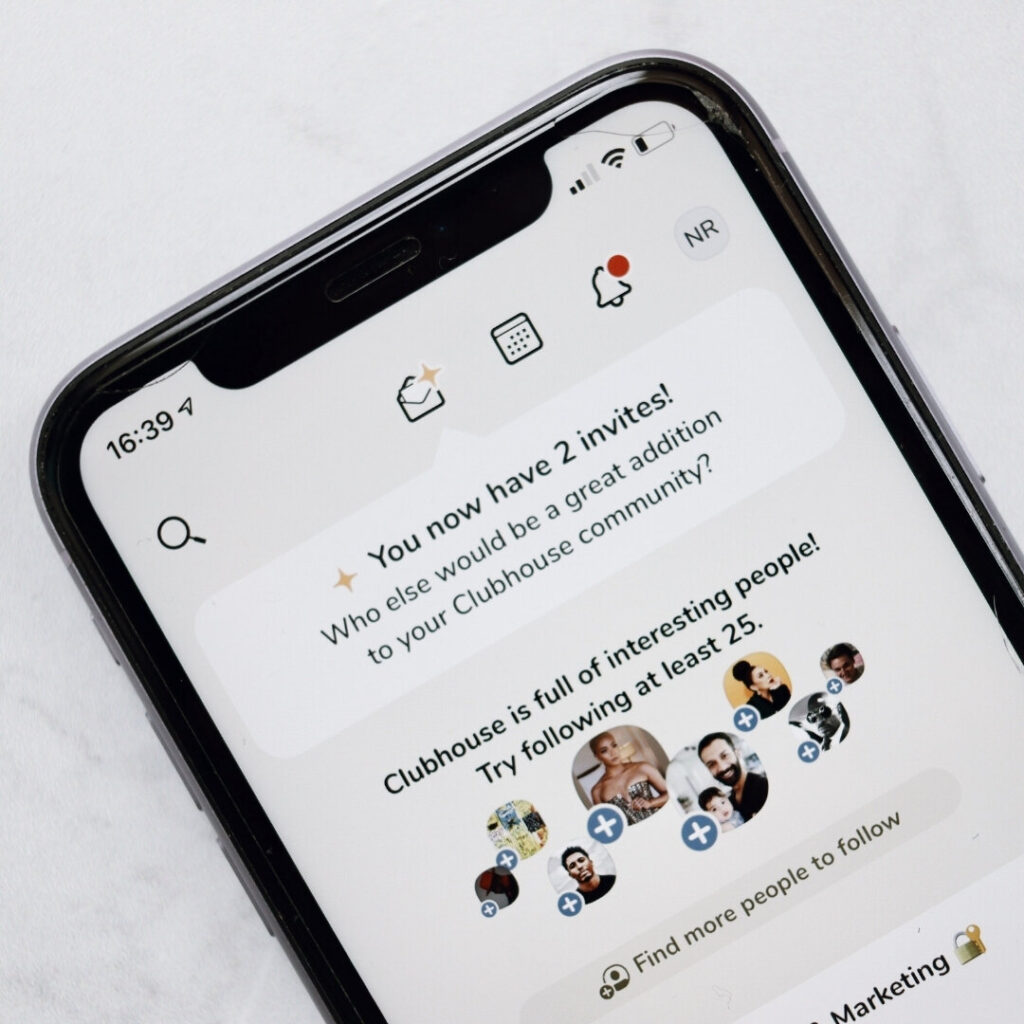The COVID-19 pandemic has forced much of the world to evolve, including social media and conferences. Clubhouse has emerged as a standout new option in both fields, generating buzz while removing the pain that comes with a day of Zoom meetings. Quite simply, the audio-only, invite-only social channel appears to be the next big thing in networking and thought leadership.
Which is great for Clubhouse… but can it help you? (Or have you already missed the boat and should just wait for the next next big thing?) There’s still a chance to become an influencer on the platform and expand your speaking opportunities. We asked Amanda Pressner Kreuser, co-founder and managing partner of Masthead Media, how to make Clubhouse a powerful tool for startups and founders.
Next-Level Networking
Clubhouse is a combination of learning and branding tools that don’t require a lot of fancy graphics. Leaders and business owners should approach it as a combination LinkedIn feed and favorite conference, now updated to be pandemic-safe. Kreuser notes it offers great potential benefits, particularly as we still grapple with the challenges of COVID-19: “The platform is the next best thing to live events that we have right now, and those are almost always the best place to expand your network.” Unsurprisingly, she recommends giving it a try.
“You should certainly work to grow the presence for your brand and its leadership on that platform,” she says. (She also notes users need to recognize that, if they’re going to maximize Clubhouse’s benefits, it’s “essential to establish your professional brand and share your perspective.”).
So how do you get started? One suggestion is to approach the platform like speed dating. Stay in clubs and conversations relevant and useful to you, but be willing to walk away when something isn’t a good fit. You can find new conversations every few minutes. Listen for people whose perspective you like and places that create an opportunity for you to share.
As you become known to others, clubs and conversations will offer you more chances to make a sales or brand pitch. Feel free to adapt to suit the environment, as long as you remember to keep it similar to your elevator pitch.
As you grow more comfortable and confident, you can focus more on becoming one of those people sought out by others.
Properly Presenting Yourself
Like LinkedIn and conference agendas, people will often use bios to figure out who to follow and when their expertise is relevant. So take the time to ensure your bio is as effective as possible.
“Write a keyword-rich bio and put the most critical terms right up front because they show up as people are searching for others to follow,” says Kreuser. The algorithm is still relatively unknown compared to older, more established social channels. Your best bet: so write based on how your industry talks about itself, which helps people in the field find you and gives you a chance to demonstrate your expertise.
This doesn’t mean you need to limit yourself. Kreuser also suggests company leaders listen and speak in areas outside of their comfort zone: “One of the best parts of Clubhouse is that you have an opportunity to step outside of your everyday circle and interact with people who have a knowledge base different than yours.” That said, go in prepared: “Be open to new areas and conversations but keep your voice consistent. Talk like you would at a conference and when networking professionally. You need to know how you want to present yourself before you start because topics are always changing.”
Look for areas where industry leaders speak and engage, even if they’re outside of your niche. The number of clubs and conversations has proliferated, and people’s interests are still evolving. There’s a significant opportunity to listen, learn and then participate in the conversations driving your brand category, but they don’t always fit how companies position themselves on other social platforms.
How Startups Can Seize the Day
“Startups should definitely not shy away from Clubhouse — the time is now to plant your flag and start leading conversations,” says Kreuser. She recently observed one perfect opportunity: “Cosmopolitan just hosted a chat about what we will all be wearing after sweatpants. If you’re a challenger brand in that space and have a strong viewpoint, why shouldn’t you create and lead that room?”
Let’s recap how to make the most of Clubhouse. First, participate in the conversations relevant to your industry, growing your following. Once you have a few people interested in what you have to say, find a partnership or launch your own room. Be willing to step outside your niche, particularly as you figure out how to present yourself.
One more tip: Stay loose. One of Clubhouse’s charms is that it’s still spontaneous. You’re rewarded for being conversational and authentic. Indeed, you can even have a little fun. “Drop into a few rooms with interesting-sounding titles, listen in, share your perspective,” Kreuser says. “You never know where you’ll find a partner or sales target that is hopping rooms like you.”




